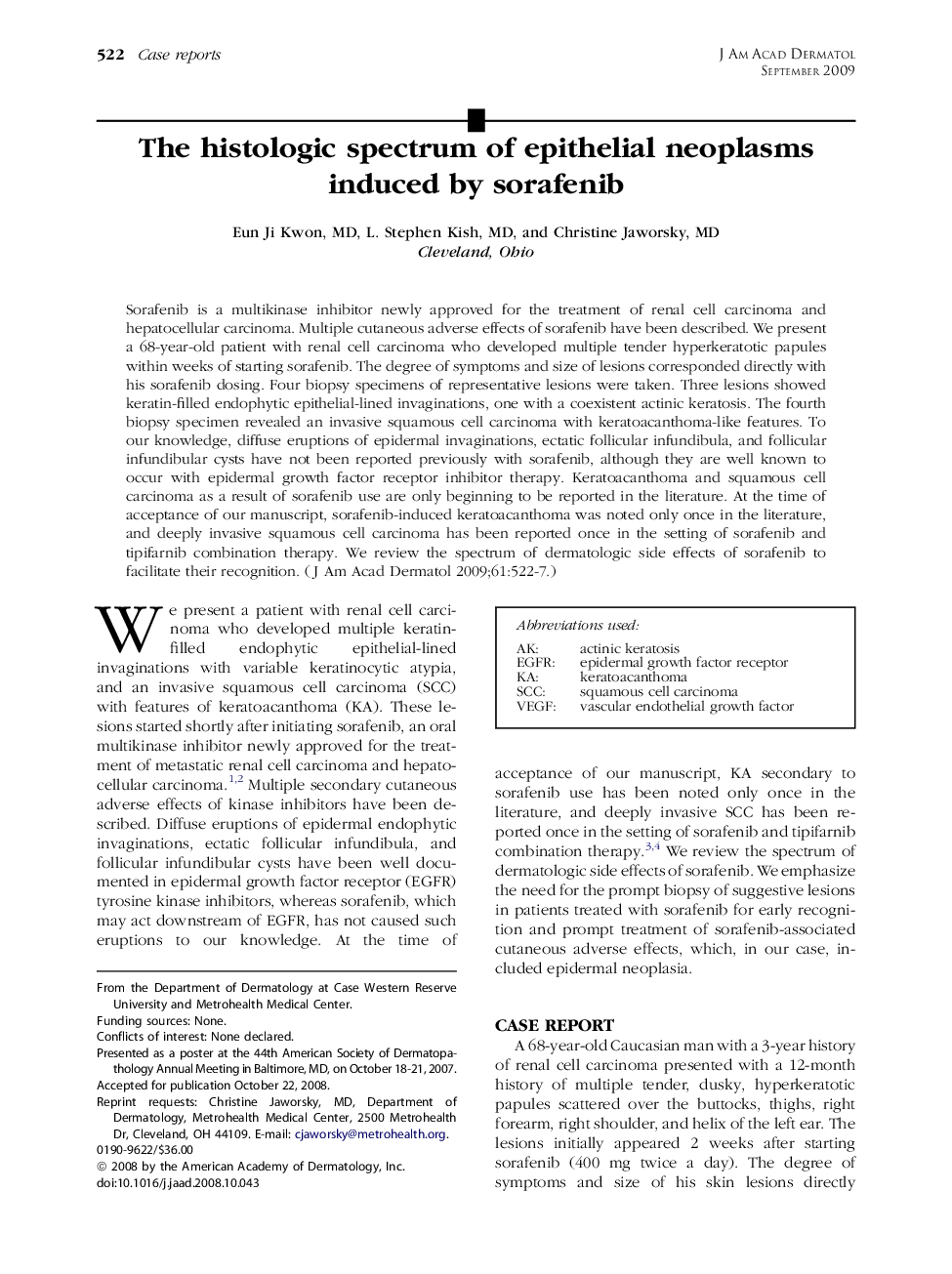| Article ID | Journal | Published Year | Pages | File Type |
|---|---|---|---|---|
| 3209288 | Journal of the American Academy of Dermatology | 2009 | 6 Pages |
Sorafenib is a multikinase inhibitor newly approved for the treatment of renal cell carcinoma and hepatocellular carcinoma. Multiple cutaneous adverse effects of sorafenib have been described. We present a 68-year-old patient with renal cell carcinoma who developed multiple tender hyperkeratotic papules within weeks of starting sorafenib. The degree of symptoms and size of lesions corresponded directly with his sorafenib dosing. Four biopsy specimens of representative lesions were taken. Three lesions showed keratin-filled endophytic epithelial-lined invaginations, one with a coexistent actinic keratosis. The fourth biopsy specimen revealed an invasive squamous cell carcinoma with keratoacanthoma-like features. To our knowledge, diffuse eruptions of epidermal invaginations, ectatic follicular infundibula, and follicular infundibular cysts have not been reported previously with sorafenib, although they are well known to occur with epidermal growth factor receptor inhibitor therapy. Keratoacanthoma and squamous cell carcinoma as a result of sorafenib use are only beginning to be reported in the literature. At the time of acceptance of our manuscript, sorafenib-induced keratoacanthoma was noted only once in the literature, and deeply invasive squamous cell carcinoma has been reported once in the setting of sorafenib and tipifarnib combination therapy. We review the spectrum of dermatologic side effects of sorafenib to facilitate their recognition.
